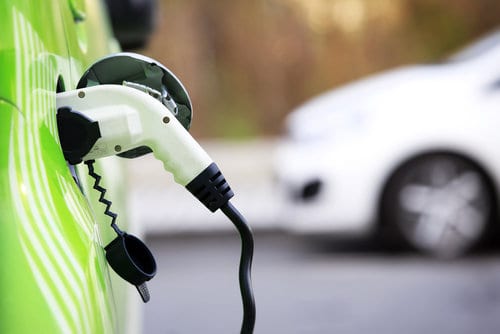
German firms have come together to test whether electric vehicles might be able to help stablize the grid when connected to it. The results are promising.
Not even one out of a thousand cars in Germany is electric. The figure is 0.07 percent. What’s lacking is a fringe benefit. In Japan, where sales of e-cars is four times higher, “people buy electric vehicles as backup power generators,” says Detlef Beister, who develops new business models at SMA.
“We don’t have this problem to the same extent in Germany.” Now, German power provider Lichtblick is working with SMA, Volkswagen, and Fraunhofer IWES to test new business models for electric cars.
Bidirectional charging
Inverter maker SMA made a wall-mounted charging station for bidirectional charging. The unit is based on Sunny Tripower and has a capacity of 10.5 kW. “The goal was not to see how much power we can connect to the grid, but to see how customers react when their cars are connected to the power market,” Beister says.
Lichtblick then simulated earnings from the ancillary service market. Forty households in Berlin with EVs took part. In the field test, every participant decided how much battery capacity would be made available. Lichtblick bundled the small capacities to create a virtual power plant for ancillary services.
The potential business plan is that every car owner, regardless of their storage capacity, would receive a monthly “swarm bonus” for this service. It’s sounds easy, but in practice it’s complicated. Car owners have to be plugged into the grid when they take part. “The service provider has to offer a reliable volume from a pool of thousands of vehicles based on forecasts and statistics,” explains Gero Lücking, head of Lichtblick.
“The project revealed certain driving and charging patterns, so that we can offer this reliable capacity thanks to information our customers provide via an app.” “We make sure that the battery capacity promised is available along with a security margin that customers demand when they want to take off again,” Lücking says. “After all, we don’t want such business models to restrict individual mobility at any point.”
Source: Renewables International. Reproduced with permission.








